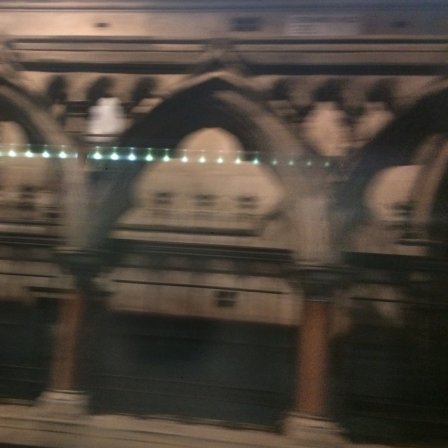“Never really try to judge a girl by how she fakes.”
Cities have often been founded near or along rivers due to the various advantages they provide to settlement. Prior to the emergence of subtle and pervasive networks for the movement of bodies and capital, forming the invisibly overlapping bones of the city’s monstrous skeleton, the river was the primordial medium for the transmission of value — something like their spinal column. In a more literal way than the differentiated flows that make up the city, the uniform, watery flow of the river is inscribed into the earth. Its unidirectional movement becomes, in the value-creating labor of life, the basis for an expanding, self-complicating system of movement strategies. From the ecological order of rivers and tributaries, a different and more opaque order is born.
The river is a connection between different bodies of water, its banks a meeting place for different people, things, and values. In that sense, it’s not only a prototype for the connective geography that forms the inside of the city, but also for the cosmopolitan ideal defining it in reference to its outside. The first encounters on the banks of rivers foretell the convergence of all the world’s corners in “global” cities like Paris, New York, and London. The natural history of urbanization, and of civilization itself, begins when water fills and enlarges the cracks and folds of the land. It makes sense, then, that ark-building and the navigation of violent rapids form one of the oldest and best-known metaphors for the civilizing activity of making a home for ourselves in a world indifferent to our harboring.
Where does the “fake city” end and the “real city” begin? The riverbank is one option. For most cities on rivers, that’s certainly where the idealistic façade of the city breaks down. Somewhat paradoxically, depending on how you look at it, the river can be either the spatial thesis or antithesis of the city. River water tends to become a medium for urban waste and detritus. The unfolding city leaks into its source, like smoke clouding fire. Once its central verdancy, the river running through a sufficiently developed city becomes a non-location. Thrown into the river, a thing effectively ceases to exist. Because the city, at its highest level of functioning, follows a principle of permanence in contrast to that of the river — the city being an infrastructural project and the river being a force of natural defiance to infrastructure; the two have a complicated relationship. While the city represents an ideal of mastery over the immutable and immovable flow, it is that flow to which it owes its being and in which it collects the mucky, amalgamated product of its work.
When commissioned to develop an electronic ticketing system for public transportation in London, the supplier consortium TransSys named their ticket the “Oyster card,” based on the oyster’s association with “security and value” and on the idiom “the world is your oyster.” Coined by Shakespeare, the idiom has a parallel in Herman Melville’s Moby-Dick: “What is the great globe itself but a Loose-Fish?” Of course, an oyster is not the same thing as a “Loose-Fish,” which has value, but not security. While for Shakespeare the value of the world is revealed and possessed by shucking, Melville conceives of it as unpossessed, slippery and exposed. Lolina (f.k.a. Inga Copeland) has been described as the kind of artist who hides her subject away, as if throwing it into the infernal river, to be gotten only at great hermeneutic effort. I prefer the interpretation that, in her music, things are presented as they really are: appearances in motion. The mucky film in which things resurface.
It often seems both possible and advantageous to separate conceptually the lives of humans, with their values, games, and stories, from the supposedly law-ordered life of “nature.” It is thrilling to view the activities of living and creating as a game of roulette, proceeding according to some unobtainable rules the knowledge of which could never be of much use in the activities themselves. The fun of a game, after all, has to do with not knowing how it will turn out and with the idea that nature is somehow indifferent. In Lolina’s The Smoke, I sense the lightness and thrill of play as well as the weight and force of a world that deflates chance and pushes the unknown to an ever-expanding margin. It captures both the excitement and the malaise, the tension and the release, of not-knowing.
In a sense, we live as if tossed about an endless river. Whether you look for it in your mind or in a one-way SpaceX rocket trip to Mars, there is no escape from the world. But what about from other people? From appraisal? “I thought I had the right to be forgotten,” complains Lolina, referring to the legal protections enforced by the European Union of individuals’ privacy from being indexed by search engines. For what it’s worth, you can’t find much information about Lolina through an internet search. In spite of this unavailability, upon which she has built her public image, Lolina has steered clear of the forgettable. As if taking a bus and a train and then throwing her Oyster into the Thames before running off on foot, she escapes into circulation, and across dimensions of it. Her perfect crime consists in continuing to plant the evidence, prolonging the search.
More about: Inga Copeland, Lolina




